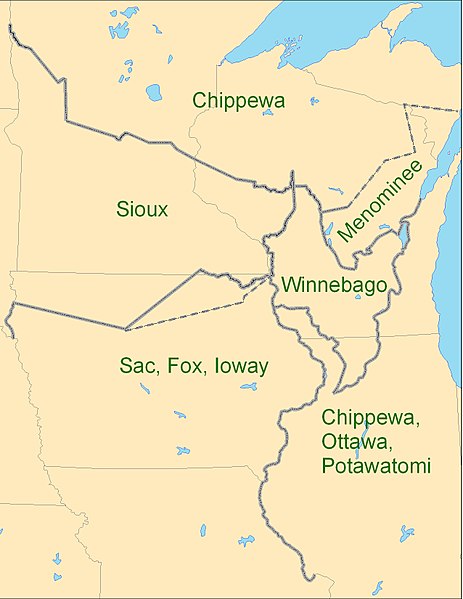Mississippi River Band of Chippewa Indians
Mississippi River Band of Chippewa Indians or simply the Mississippi Chippewa, are a historical Ojibwa Band inhabiting the headwaters of the Mississippi River and its tributaries in present-day Minnesota.
Prairie du Chien Line, 1825 Minnesota
Reservations of the Mississippi Chippewa in Minnesota
Chippewa Chief Big Dog offered to fight the Sioux for Lincoln. The St Paul paper felt his appearance was the epitome of an indigenous warrior.
Minnesota monument to Mille Lacs war Chief Mou-Zoo-Mau-Nee and his 300 Mille Lacs and Sandy Lake warriors who offered to fight the Sioux and defend Fort Ripley during the Sioux uprising. Dedicated 1914 at the Fort Ridgely because Fort Ripley was abandoned by then. The monument is the same size as the one the State put up for the men of the 5th Minnesota lost at Ridgely and Redwood Ferry.
The Sandy Lake Tragedy was the culmination in 1850 of a series of events centered in Big Sandy Lake, Minnesota that resulted in the deaths of several hundred Lake Superior Chippewa. Officials of the Zachary Taylor Administration and Minnesota Territory sought to relocate several bands of the tribe to areas west of the Mississippi River. By changing the location for fall annuity payments, the officials intended the Chippewa to stay at the new site for the winter, hoping to lower their resistance to relocation. Due to delayed and inadequate payments of annuities and lack of promised supplies, about 400 Ojibwe, mostly men and 12% of the tribe, died of disease, starvation and cold. The outrage increased Ojibwe resistance to removal. The bands effectively gained widespread public support to achieve permanent reservations in their traditional territories.

U.S. Army Corps of Engineers and members of the Ojibwa nation canoe across Big Sandy Lake in honor of those who died in the Sandy Lake Tragedy (Big Sandy Camp is near the top left corner of the picture)





